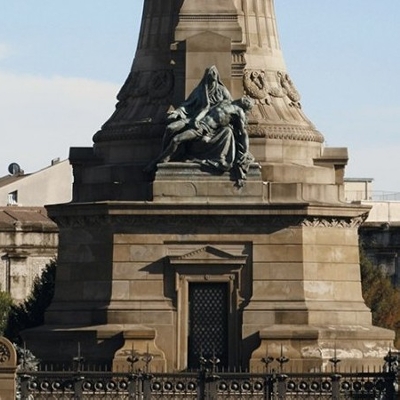Expiatory Chapel
A date remains carved in Monza's historic memory: 2 July 1900. An event: the assassination of the King of Italy, Umberto I - who had just attended a gymnastics display in Monza - by the anarchist Gaetano Bresci who, with the act of regicide, apparently wanted to avenge the brutal suppression of a popular uprising in Milan from 6 to 9 May 1898, caused by the constant increase of the price of bread and flour. The royal troops under the command of General Fiorenzo Bava Beccaris fired on the crowd causing the death of 80 or perhaps 300 people (there is disagreement on the number of victims); King Umberto I had decorated the general for these actions.
Sentenced to life imprisonment, Bresci always declared that his extreme gesture had been an "act of justice" inspired by the people against the figure of the King (considered the ultimate authority responsible for the massacre), not against Umberto in person. But another line of thought attributed the regicide to a vast anarchical plan, perhaps inspired by the "Queen of the anarchists", Maria Sophie of Bourbon, last queen of the Two Sicilies (Sister of Empress Elisabeth of Austria [Sissi] and wife of King Francis II of the Two Sicilies) who is said to have sympathised with the anarchists and - according to one theory - was interested in undermining the Kingdom of the Savoia.
To honour the memory of Umberto, his son Victor Emanuel III ordered the building of the Expiatory Chapel, which stands on the exact spot of the assassination, on the avenue that leads to the Royal Palace. The work, designed and started by the architect Giuseppe Sacconi, was continued and concluded on his death by the architect Guido Cirilli and inaugurated on the tenth anniversary of the tragic event. The monument - in Oggiono stone - is adorned with sculptures and votive wreaths in bronze and by mosaics depicting symbols and saints of the Savoia dynasty.
Every year, on 29 July, a commemorative ceremony is held at the chapel, promoted by the National Institute for the guard of honour at the royal tombs in the Pantheon.
Contact info
- Via Matteo da Campione 7/a Monza
- Lat 45.5915913909053, Long 9.268564462661743
- +39 02 86313.211/290
- +39 02 72023269
- http://www.architettonicimilano.lombardia.beniculturali.it/?page_id=170
- sbap-mi@beniculturali.it

